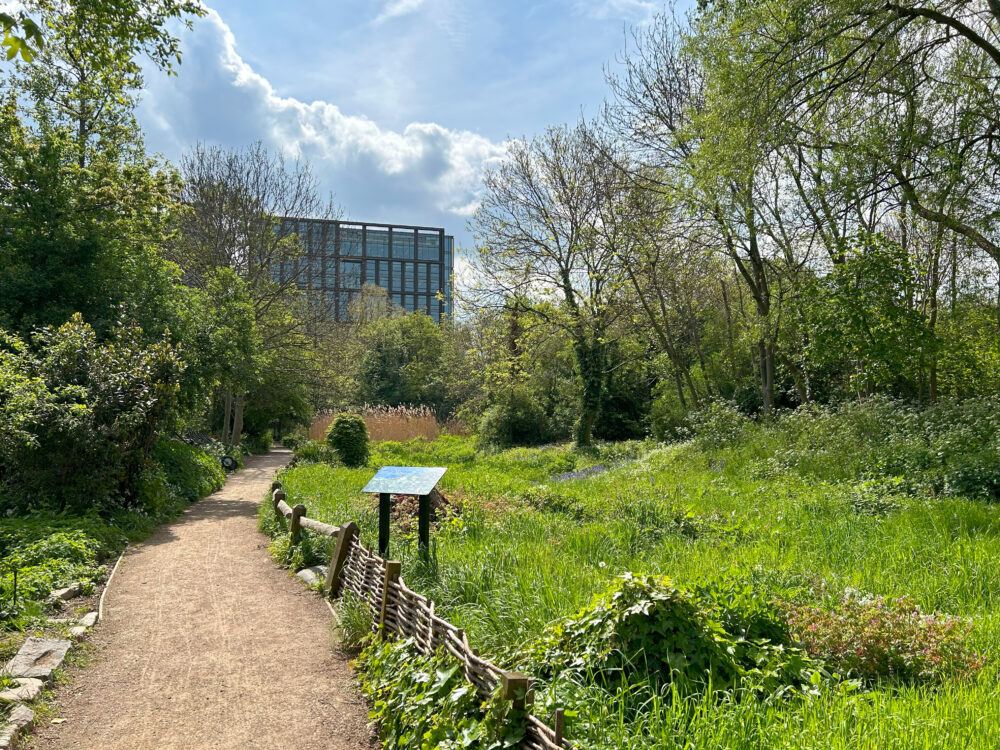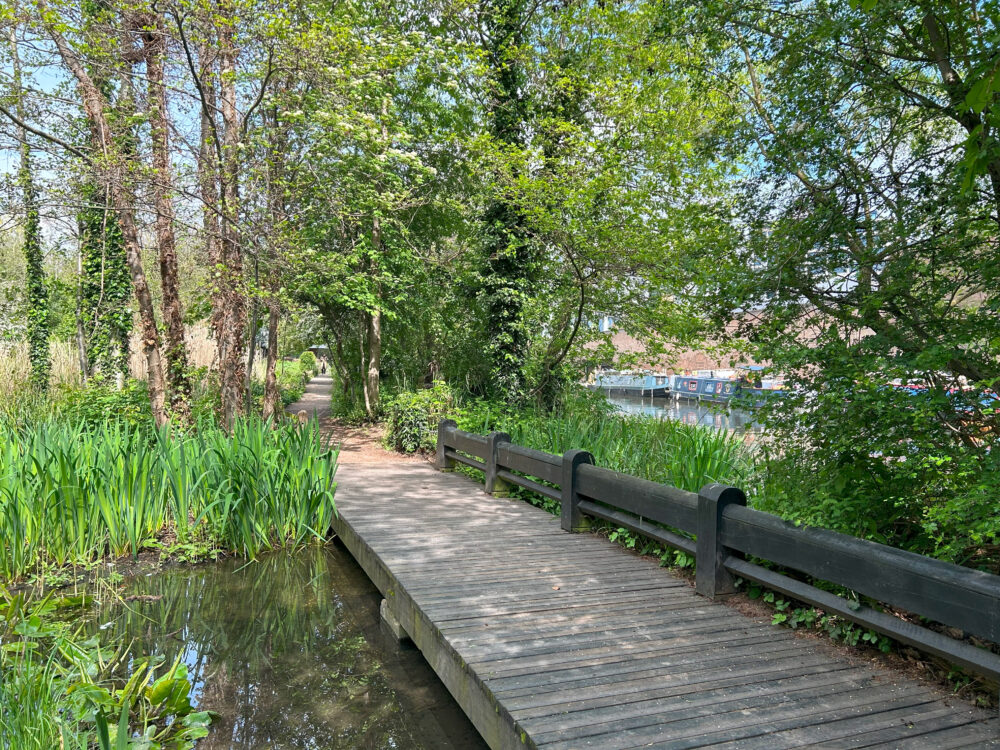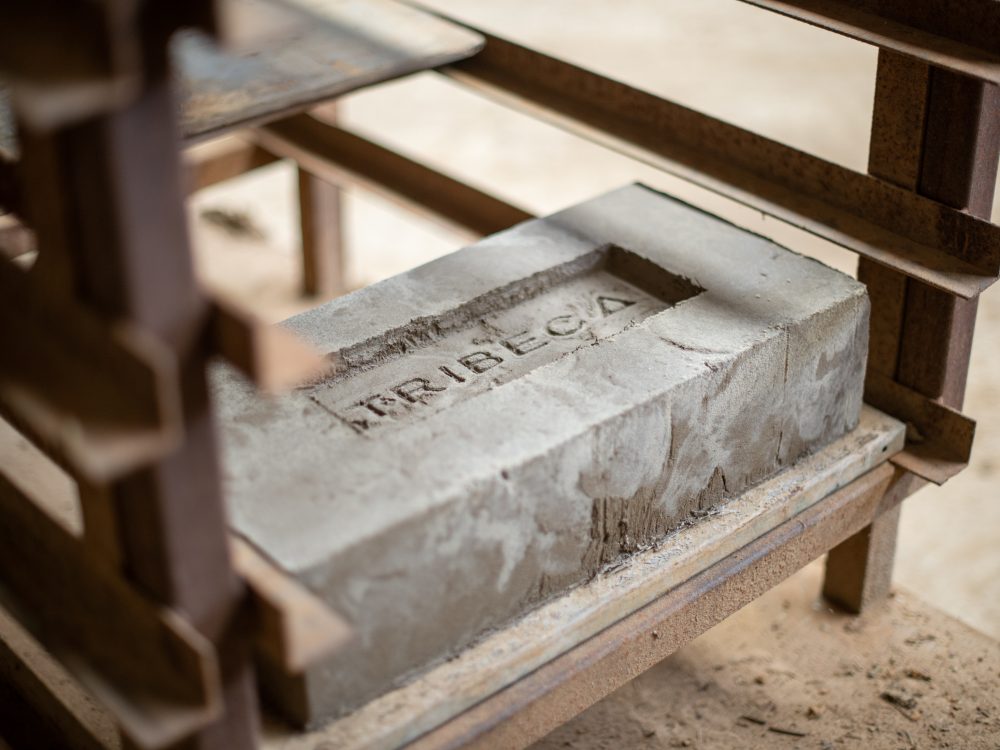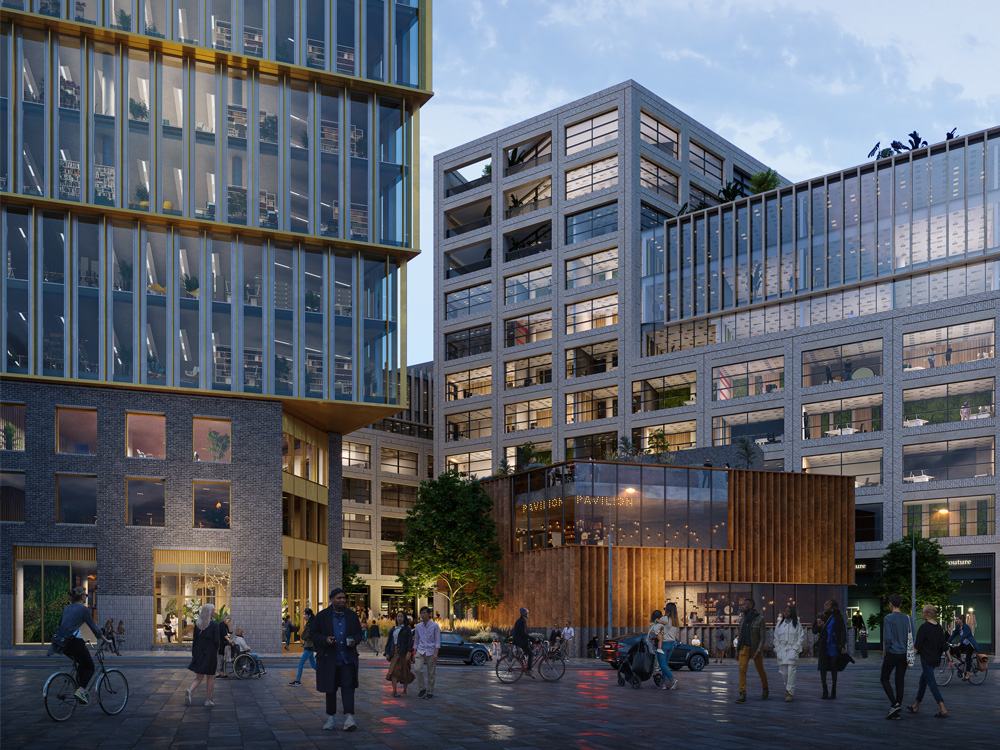Camley Street Natural Park – an oasis in the city
Wedged between Regent’s Canal and the St Pancras railway viaduct is a small but verdant piece of wild nature. In this secluded sanctuary, local residents and visitors can escape the kerfuffle of the city and tune into the restorative sounds and rhythms of nature.

Camley Street Natural Park is a two acre Local Nature Reserve and Site of Metropolitan Importance for Nature Conservation just a skip and a jump from the modern office blocks, homes and boutiques of King’s Cross, yet it feels like a world apart. Glimpses of the city behind the treeline and distant PA announcements are the sole reminders that this is in fact one of the busiest spots in the capital.
The site was once a coal drop yard for the Great Northern Railway Company, which brought coal from the north of the UK to the site for distribution across the capital. When coal trade came to an end with the Clean Air Act in 1956, the site was abandoned and left as an unmanaged and polluted wasteland. The London Wildlife Trust saw the site’s potential as a nature space for wildlife and people and succeeded in saving it from development. The park opened to the public in 1985. At that time it was barren, but after just four decades, the vegetation has matured and intensified, sheltering wildlife and visitors from the bustle around it.
The London Wildlife Trust manages the park alongside an onsite visitor centre, outdoor café and education rooms, which was constructed as part of a recent makeover. People of all ages are welcome to visit or volunteer, exploring and learning about urban wildlife and plants. Ongoing maintenance ensures that pathways are accessible and the site is listed on Euan’s Guide, a disabled access review guide, as an accessible nature reserve.
“We want this to be a place where everybody feels welcome and like it is their space.”

The linear park is roughly the size of a football pitch and has a surprisingly diverse mosaic of landscapes – woodland, grassland, wetland, reedbeds and marshy areas – that provide habitats for mallards, coots, kingfishers, herons, amphibians and insects.
At the entrance are two flowering raingardens with a butterfly and bee mound built from construction waste material. A woodchip path leads onto a meadow framed by a small woodland, which successively turns into a marshland and open ponds with a dipping platform. Coots are nesting on small islands, safe from the resident foxes, and micro pools provide sheltered spawning and nursing grounds for frogs and aquatic vertebrates. Floating reedbeds along the canal edge are home to nesting birds, invertebrates and small fish that seek protection in the root system. The reedbeds also absorb excess nutrients and pollution from the water, cleaning up the post-industrial canal.

The path terminates at a floating viewpoint with views across the canal and Coal Drops Yard. The structure was designed by a group of young Finnish architects and takes inspiration from the rocky outcrops of the Nordic coastline. Local residents, office workers, students and tourists come here to observe the wildlife in the canal close-up, have lunch, or just relax and unwind.
Free drop-in days are organised throughout the year, with opportunities for pond-dipping, mini-beast hunts and sensory activities where children can speak about what they hear, see and smell. London Wildlife Trust ranger Mara Cutas says that the kids love it: “many come here quite hesitant and a bit scared, but by the end of the session they might be holding a slug or a worm with great pride. We hope to give young children good memories of being outdoors so that they feel more inclined to spend time in nature when they are older”.
The London Wildlife Trust also runs workshops for young adults, which is the group that engages the least with nature, focused on arts and crafts, conservation activities and discussions around topics such as climate change.
Summer is the busiest period at Camley Street Natural Park, but winter visits offer more tranquillity and an opportunity to truly get immersed in nature. Although the colder seasons are not as active, there is always wildlife to see.
More information about Camley Street Natural Park and the various activities on offer can be found on their website.


